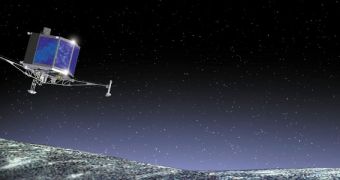Engineers and mission controllers at the European Space Agency (ESA) will go through some tense moments on Monday, January 20, when they will try to reestablish contact with the Rosetta spacecraft.
The vehicle, currently located more than 800 million kilometers (~500 million miles) away from Earth, is heading out into the solar system to rendezvous with comet 67P/Churyumov–Gerasimenko.
The €1-billion ($1.4-billion) spacecraft was launched into space in 2004, when the correct launch window opened, but was placed in hibernation mode in mid-2011, to conserve some critical energy.
When it meets up with its target later in the year, Rosetta will enter orbit around the celestial object, and then release its Philae lander. The latter will latch itself to the comet and begin conducting studies.
Philae contains 10 scientific instruments that will be used to gain a deeper understanding of how comets form and evolve. 67P/Churyumov–Gerasimenko is believed to be as old as the solar system, Nature News reports.
“With every second of delay, immediately you say, ‘OK – something has gone wrong.’ You can know you’ve done everything right, but it’s always human nature to believe something bad has happened. I can tell you, you sweat like hell,” says ESA expert Claudio Sollazzo, who managed the failed 2005 Huygens mission to Titan.

 14 DAY TRIAL //
14 DAY TRIAL //